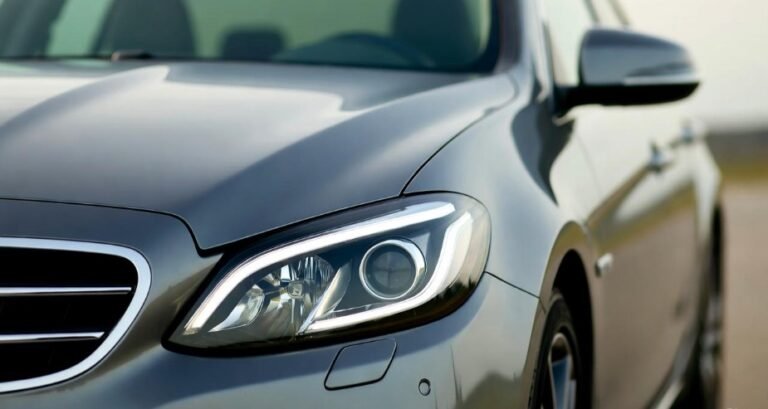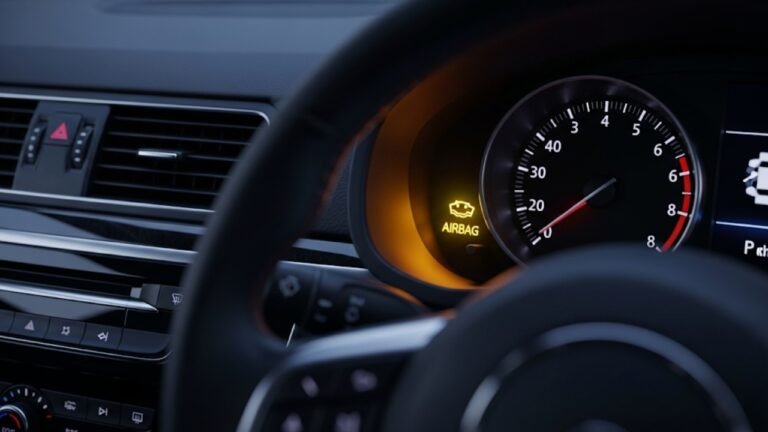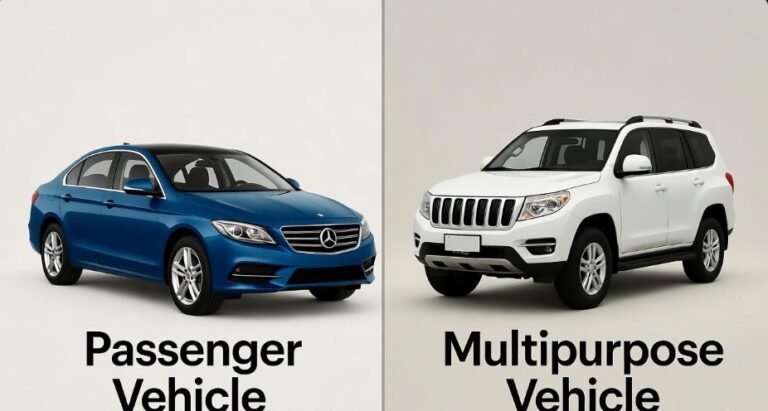How Much Does a Volkswagen Beetle Weigh: The Ultimate Guide
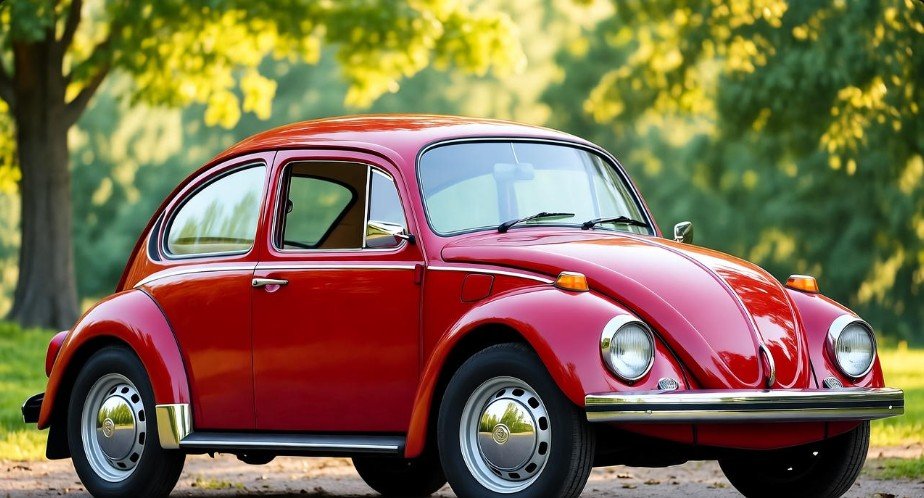
If there’s one car that has left a permanent mark on the world’s automotive culture, it’s the Volkswagen Beetle. With its unmistakable curves, friendly demeanor, and nostalgic personality, the Beetle isn’t just a car—it’s a story on wheels. From the streets of Germany in the 1930s to driveways across America and beyond, this little bug has captured hearts for generations. But have you ever wondered, “How much does a Volkswagen Beetle weigh?”
That might sound like a simple question, but it opens the door to understanding the engineering genius and cultural evolution of this timeless machine. Depending on the model and year, a Volkswagen Beetle weighs approximately 2,850 to 3,031 pounds. This number might vary slightly, but it says a lot about how the Beetle has balanced compact design, safety, and performance throughout its evolution.
In this detailed guide, we’ll explore not only the weight of the Volkswagen Beetle but also why it matters—how it impacts performance, fuel economy, and handling. We’ll take a trip through history, look at different model variations, and even talk about how you can modify your Beetle without upsetting its delicate balance.
A Journey Through Time: The Evolution of the Volkswagen Beetle’s Weight
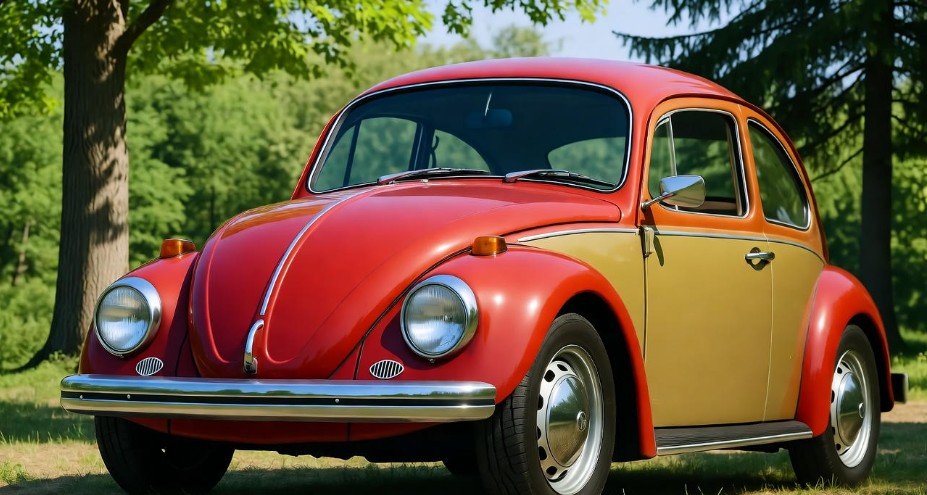
When the first Volkswagen Beetle rolled off the production line in the late 1930s, it wasn’t just a car—it was a revolution in simplicity. That original Beetle weighed around 1,600 pounds, a featherweight by today’s standards. The goal was simple: create an affordable, reliable car that anyone could maintain and drive.
As decades passed, the Beetle’s design evolved, and so did its weight. By the 1970s, safety regulations and consumer expectations led to sturdier materials and enhanced comfort. These updates nudged the car’s weight upward. Fast forward to the New Beetle introduced in 1998, and suddenly, the charming little car had gained a few hundred pounds—thanks to airbags, stronger chassis, and modern technology.
By the time the final production models appeared in the early 2000s, they weighed anywhere from 2,712 to 3,296 pounds, depending on the trim and engine type. Still compact, still friendly—but clearly built for a new generation that demanded more features and safety without losing that signature “Beetle spirit.”
Key takeaway: The Beetle’s increasing weight over the years mirrors its evolution from a minimalist icon to a modern, safety-oriented compact car that still feels unmistakably fun to drive.
What Factors Influence the Volkswagen Beetle’s Weight?
Like every car, the weight of a Volkswagen Beetle doesn’t just happen by chance. It’s the result of several key factors working together to create the right balance of performance, safety, and comfort.
Let’s look at some of the main influences:
-
Materials Used: Early Beetles used lightweight steel and simple construction methods. Modern versions use reinforced steel, aluminum, and safety structures that add strength—and pounds.
-
Engine and Transmission: Different engines and transmissions naturally change a car’s total weight. Turbocharged engines, for example, add components like intercoolers and stronger mounts.
-
Safety Features: Airbags, crumple zones, and side-impact beams have become standard, increasing both weight and protection.
-
Interior Amenities: Features such as infotainment systems, air conditioning, and premium sound systems all contribute to added mass.
-
Wheels and Tires: Larger alloy wheels and wider tires improve handling but also increase weight slightly.
When you combine these factors, it’s easy to see why the Beetle’s weight has fluctuated across generations. Engineers had to make careful trade-offs to preserve the car’s agility and personality while keeping up with modern expectations.
Volkswagen Beetle Weight Comparison by Generation
To really understand how the Beetle’s mass evolved, let’s look at an approximate comparison across different generations:
| Generation | Production Years | Approximate Weight Range |
|---|---|---|
| Classic Beetle (Type 1) | 1938–2003 | 1,600 – 1,798 lbs |
| New Beetle | 1998–2011 | 2,712 – 3,296 lbs |
| Beetle A5 (Modern Generation) | 2012–2019 | 2,850 – 3,031 lbs |
As you can see, the Beetle has more than doubled in weight since its earliest versions. Yet, the extra pounds brought modern comfort, enhanced safety, and a quieter, smoother ride—qualities that turned this retro design into a practical daily driver once again.
Breaking Down the Weight: What Makes Up a Beetle’s Mass
So, where does all that weight actually come from? A Volkswagen Beetle’s total weight isn’t just about the body or engine—it’s an orchestra of different components playing together to create balance and structure.
Here’s a simplified breakdown:
-
Body and Chassis (40%): This includes the steel frame, doors, roof, and safety reinforcements. They give the Beetle its structure and iconic shape.
-
Engine and Drivetrain (25%): The heart of the Beetle. Depending on the model, this could be a rear-mounted air-cooled engine or a front-mounted turbocharged one.
-
Interior Components (20%): Seats, dashboard, carpeting, air conditioning units, and infotainment systems add to the overall mass.
-
Suspension, Wheels, and Tires (10%): These ensure comfort and stability, balancing performance and safety.
-
Miscellaneous (5%): Fluids, wiring, and smaller accessories complete the equation.
Understanding how the weight is distributed helps explain why the Beetle handles so uniquely. Its compact frame, combined with thoughtful weight distribution, gives it that distinctive “glued-to-the-road” feel many owners love.
How Weight Affects the Beetle’s Performance
Weight is one of the most influential factors in how any car behaves on the road. For the Volkswagen Beetle, it’s a double-edged sword—too light, and it feels bouncy; too heavy, and it loses its lively nature.
A lighter Beetle—like the original air-cooled models—offered quick acceleration and a nimble, go-kart-like feel. However, it also meant less protection in crashes and fewer comfort features. The heavier modern Beetles deliver better stability at higher speeds, improved crash safety, and smoother rides, though they sacrifice a bit of the old-school agility.
Here’s how weight directly influences performance:
-
Acceleration: More weight requires more power to move. That’s why newer Beetles often have turbo engines to balance performance.
-
Fuel Efficiency: Lighter cars need less energy to run, making them more fuel-efficient. The added pounds in modern Beetles slightly reduce MPG but improve safety.
-
Handling: Extra mass improves road grip, especially in windy conditions, but can make cornering less sharp.
-
Braking Distance: Heavier cars need longer stopping distances, so brake quality and maintenance become crucial.
The takeaway? Volkswagen engineers have worked tirelessly to maintain the Beetle’s cheerful, fun-to-drive personality—regardless of how many pounds it’s gained over time.
Modifying Your Beetle: How to Manage Its Weight
If you’re a Beetle owner or restorer, you’ve probably thought about modifications. Whether you’re trying to make your Beetle lighter for performance or sturdier for comfort, weight management is a key part of customization.
Here are a few practical approaches:
-
Replace Heavy Stock Parts: Consider swapping out steel panels with carbon fiber or fiberglass alternatives.
-
Use Lightweight Wheels: Aluminum or magnesium wheels reduce rotational mass, improving acceleration and handling.
-
Upgrade the Exhaust System: A titanium or stainless steel exhaust not only sheds weight but also enhances sound and efficiency.
-
Simplify the Interior: Removing non-essential accessories or using lightweight seats can make a noticeable difference.
However, it’s important to remember the legal and safety aspects. Every modification must comply with local vehicle regulations. Overly lightening your Beetle might affect crash performance or stability, so moderation is key.
In short, a balanced approach—where you improve efficiency without compromising structure—is the smartest way to manage the weight of your Volkswagen Beetle.
Caring for Your Beetle: Why Weight Awareness Matters
Owning a Volkswagen Beetle isn’t just about nostalgia—it’s about understanding how every detail affects performance and longevity. Weight is one of those silent factors that influence everything from fuel economy to maintenance frequency.
For example, heavier Beetles tend to put more stress on suspension components, brake systems, and tires. This means regular check-ups and part replacements are crucial to prevent wear. If you’re storing your Beetle long-term, its weight also matters—always park it on a level surface, keep the tires properly inflated, and move it occasionally to avoid flat spots.
Keeping your Beetle’s weight in mind helps extend its life, maintain its classic feel, and ensure it performs as beautifully as it looks.
Long-Term Effects of Weight on a Volkswagen Beetle
Every car carries its story in its weight—and for the Volkswagen Beetle, that story is one of endurance and charm. Over time, the vehicle’s weight can have subtle yet lasting effects on how it performs and ages. The heavier the model, the greater the strain on its suspension, chassis, and drivetrain components. For example, constant load on the suspension can cause it to sag slightly after years of driving, leading to uneven tire wear or reduced ride comfort.
Likewise, the Beetle’s brake system works harder in heavier models, especially when frequently driven in city traffic. Over time, this means shorter brake pad lifespans and a need for more consistent maintenance. Even something as simple as carrying extra luggage or passengers regularly can amplify wear on parts designed for a specific weight range.
To maintain that perfect balance of reliability and comfort, regular inspections are essential. Replacing worn parts, keeping tires inflated properly, and aligning the wheels can help counteract the effects of weight-related stress. Think of it like maintaining a healthy body—keeping your Beetle “fit” ensures it continues to deliver the same joy it did on day one.
Weight Considerations During Vehicle Storage
If you’ve ever tucked your Volkswagen Beetle away for a long winter or stored it during a restoration, you’ll know that storage isn’t just about parking—it’s about preservation. The Beetle’s weight plays a quiet but important role during these rest periods.
Because the car’s weight rests on its tires and suspension even when stationary, long-term storage can create pressure points that lead to flat spots on tires or weakened springs. To avoid this, enthusiasts often recommend parking the car on a flat, dry surface and using jack stands or tire cradles to distribute the weight evenly.
Another small but vital tip: maintain proper tire pressure even during storage. Under-inflated tires can buckle under the Beetle’s 2,900-pound frame, while over-inflation can stress the sidewalls. Periodically moving the car—even a few feet—can make a big difference in maintaining even pressure and suspension health.
In essence, treat your Beetle’s weight like a sleeping giant—quiet, but always there. Proper preparation during storage ensures it wakes up ready to roll, with no surprises waiting under the hood or on the road.
How Weight Affects Maintenance Costs
Weight doesn’t just impact driving—it can subtly influence the maintenance costs of a Volkswagen Beetle over its lifetime. A heavier car puts more strain on wear-and-tear components, meaning slightly higher upkeep in areas like tires, brakes, and suspension.
For instance:
-
Tires: Heavier Beetles wear out tires faster, especially if alignment or tire pressure isn’t properly maintained.
-
Brakes: Added mass means more force is needed to stop the car, which can wear down brake pads and rotors quicker.
-
Fuel Efficiency: Every extra pound contributes to higher fuel consumption over time, particularly in urban driving.
However, these costs are relatively minor when weighed against the Beetle’s renowned reliability. Volkswagen engineered this car to last decades with proper care. If you’re proactive about maintenance and mindful of how the car’s weight influences its systems, you can easily keep your Beetle running efficiently without spending a fortune.
In short, weight might influence costs—but careful upkeep and routine checks keep those costs comfortably low.
The Symbolic Meaning of the Beetle’s Weight
Beyond engineering, the weight of a Volkswagen Beetle carries symbolic meaning. It represents the passage of time—how technology, comfort, and safety have “added weight” not just to the car, but to the legacy it carries.
The light, minimalist Beetles of the 1950s reflected a simpler era when cars were tools of freedom. They were lightweight, easy to fix, and accessible. As decades rolled on, the Beetle matured—taking on the “weight” of responsibility with advanced safety systems, digital features, and luxury comforts.
In a way, this mirrors life itself. Just as we accumulate experiences, the Beetle accumulated improvements—each one adding a little more substance, a little more depth. Yet despite this, the Beetle never lost its joyful simplicity. Its design remained friendly, its soul unchanged. That’s why enthusiasts often say: the Beetle may have gained weight, but it never lost its lightness of spirit.
Beetle Weight and Driving Experience
If you’ve ever driven a Volkswagen Beetle, you know it doesn’t feel like any other car. The weight plays a big role in that experience. Older Beetles, with their lightweight frames, offered a raw, connected drive—you could feel the road, the engine vibrations, even the rhythm of each turn. It was driving in its purest form.
Modern Beetles, though heavier, provide a completely different kind of satisfaction. The added weight brings stability, quietness, and confidence—especially on highways or during sharp turns. The balance between lightness and comfort is what makes driving any Beetle feel nostalgic yet refined.
This dynamic is what keeps the Beetle relevant, even decades after its debut. Whether you prefer the classic’s agility or the modern model’s stability, the car’s weight defines its unique personality behind the wheel.
Practical Tips: Managing Your Beetle’s Weight for Optimal Performance
If you own or plan to own a Beetle, you can take a few simple steps to keep its weight working in your favor:
-
Keep it Light: Don’t overload your car with unnecessary cargo. The Beetle was designed for balance, not bulk.
-
Check Tire Pressure Regularly: Proper inflation ensures even weight distribution and smoother handling.
-
Service Suspension Components: A well-maintained suspension keeps weight evenly spread and preserves handling quality.
-
Avoid Excessive Modifications: Heavy aftermarket parts or sound systems can upset the Beetle’s natural balance.
-
Use Quality Fluids: Engine oil, brake fluid, and coolant all contribute to smooth performance and efficiency.
These small actions can have a big impact, helping your Beetle stay nimble and efficient—just as it was meant to be.
Conclusion: The Weight That Shaped a Legend
So, how much does a Volkswagen Beetle weigh? On paper, about 2,850 to 3,031 pounds. But in truth, it carries far more—decades of history, innovation, and emotion. Its evolving weight tells a story of transformation, from a simple people’s car to a symbol of creativity and individuality.
Understanding its weight helps you appreciate not only how it drives but why it feels so special. Every curve of its body, every mechanical hum, every ounce of steel—all come together to create something greater than the sum of its parts.
Whether you’re maintaining a classic or driving a modern Beetle, remember: weight isn’t just a number. It’s the heartbeat of balance, safety, and identity that makes this car truly timeless.
Frequently Asked Questions (FAQs)
1. How much does a Volkswagen Beetle weigh on average?
A Volkswagen Beetle typically weighs between 2,850 and 3,031 pounds, depending on the model year and trim level. Older Beetles were much lighter, averaging around 1,600 pounds.
2. Does the weight of a Beetle affect its fuel efficiency?
Yes. Heavier Beetles consume slightly more fuel because the engine works harder to move the extra weight. However, modern models are designed with efficient engines to offset this.
3. Why are newer Beetles heavier than older ones?
Advances in safety, comfort, and technology have added more materials and features—like airbags, infotainment systems, and reinforced chassis—leading to increased weight.
4. Can reducing weight improve performance?
Absolutely. Swapping heavy parts for lighter alternatives or decluttering the interior can enhance acceleration and handling. Just be cautious not to compromise safety or stability.
5. What’s the lightest Volkswagen Beetle ever made?
The earliest Beetles from the late 1930s and 1940s weighed roughly 1,600 pounds, making them some of the lightest production cars of their time.
6. Does weight affect the Beetle’s handling?
Yes. Lighter Beetles feel more agile and responsive, while heavier models offer better stability and comfort, especially at higher speeds.
7. How can I check the weight of my specific Beetle model?
You can find the exact curb weight in your owner’s manual, on the driver’s side door sticker, or through official Volkswagen specifications for your model year.
8. Does carrying heavy cargo damage the Beetle?
Overloading can stress the suspension and brakes, leading to premature wear. It’s best to stay within Volkswagen’s recommended weight limits for safety and performance.


